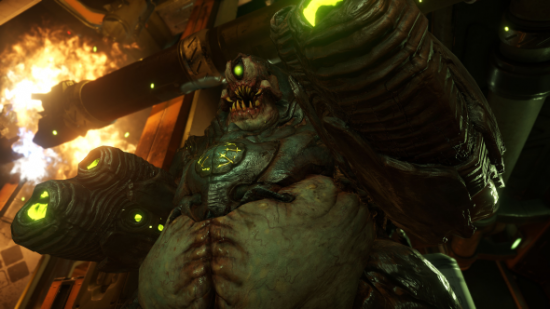The Mancubus staggers. Its hefty frame ripples with blue and white light – a signal it’s ready for the glory kill. Doomguy steps forward and plunges his hand into the demon’s chest, ripping out its heart, before plunging the glowing organ back down its throat.
To turn this into an ever-so-slightly melodramatic metaphor, id Software is the Mancubus. And its heart was ripped out on November 22nd, 2013 – the day news broke that John Carmack had left the company.
Related: the best FPS games on PC.
Carmack had represented the studio’s connection to its history. One of its two Johns, Doom designer Romero, hadn’t been a part of the company since Quake. But the other had remained – a living legend and link to the pivotal days of PC gaming.
Now id had lost its last rock star. If the inventor of the 3D engine had decided that Oculus, not id, was where he needed to be to push gaming technology forward, then what was the studio even for?
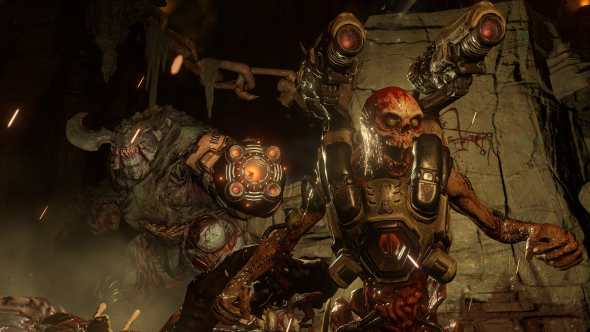
As vice president of PR at id’s parent company Bethesda, Pete Hines saw this existential struggle first-hand.
“Full credit to guys like Marty Stratton, who had been at that studio forever,” he tells us. “Those guys have internet access – they could read all the forum posts and news stories. ‘Oh, Carmack left. RIP id, these guys are done. The Doom game’s gonna suck because these guys aren’t there’. These guys read that stuff.”
At the time, Stratton was game director on a reboot of Doom that fans had already waited nearly a decade for. He remembers Carmack’s departure as a moment of historical significance for the studio.
“Any time you lose somebody who was as impactful as somebody like John, that’s a big thing,” Stratton says. “There’s an immense amount of respect for the guys who were at the company originally. [Doom artist] Kevin Cloud still works at the company, and I’m always going to his office and talking to him. I’m so respectful of the work he’s done his entire life. We have a whole trophy case at the office that’s humbling to walk by.”
From the outside, there was a sense that id had become untethered from its past – that its days of shaping the game industry were over. Soon after Carmack left, however, Stratton came to a realisation: every other videogame company makes games without his help.
“If we cannot hire or if we don’t have the talent internally to make games just like everybody else does, what are we doing?,” he thought. “That’s insane. There’s no reason we can’t do it. We can do this.”
All-stars

Stratton had arrived at id in 2000. Before then he’d been the studio’s producer at Activision, and found himself joining a team of just 12 people. He describes id at the turn of the century as a studio of ‘all-stars’, in which any staffer could have led another studio. In fact, some – such as Alice’s American McGee – would go on to do just that.
“It was just a bunch of young guys making games,” he says. “Really successful games. It’s always been very creative, very cutting edge, people trying to push the boundaries. A little bit rebellious.”
The average id employee back then was self-motivated, autonomous, and probably nursing a bit of an ego. The industry at the time was “kind of like that,” Stratton remembers, especially in first-person shooters. Many of the prominent developers of the day regularly updated .plan files which, as John Romero once put it, were the tweets of the early internet. These missives documented their latest innovations and musings about competitors’ work.
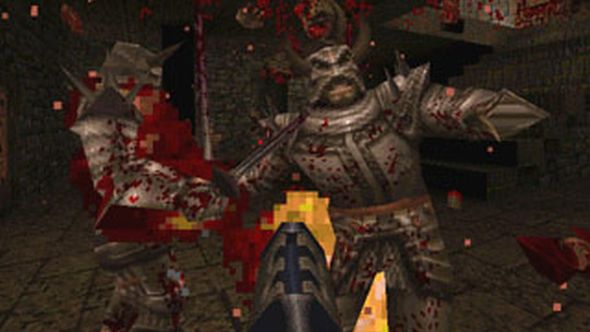
“That stuff was watched so closely,” Stratton says. “What was John doing with his Ferrari that day? Or somebody would be posting about some new game rendering algorithm. There was a bit of a rock star mentality.
“But everybody was super talented,” he adds. “Any time you strive to have the best people in the world work in your company, you’re going to have an element of ego I guess. Which is good – you actually need that level.”
In 2013, however, id found themselves fighting against the rock star image they’d built for themselves. The studio took it as a matter of pride to prove that they were not an outfit built around one person, but a creative group capable of coming together to make something brilliant.
Rebirth
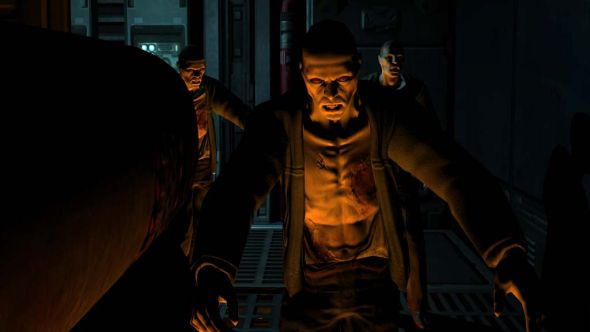
The team in Dallas embraced their identity crisis, taking the opportunity to revisit the culture of the studio and reflect on their approach to development. To Hines, the experience seemed “freeing.”
“Certainly for the tech guys, the id Tech 6 stuff was entirely born out of that departure,” he points out. “And them saying, ‘OK, we no longer have to follow one vision. It’s our collective vision of what we wanna do’.”
For years, id had talked about the magic moment during the development of each game when Carmack would produce a new, defining technological marvel. On Doom 3, it was the stencil shadowing that made its screenshots unmistakeable. For Rage, it was the vaunted MegaTexture streaming system. But now, longtime creative director Tim Willits calls MegaTexture the “dumbest technology thing ever.” Ditching it was a key moment in which he knew the studio was on the right track.
“People did step up, and they stepped up big,” he says. “They made the right decisions. That has helped us.”
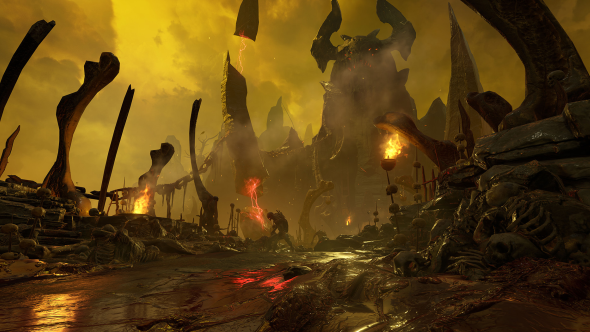
id retains the same “pretty flat” structure that powered the company through the ‘90s – albeit recreated across a team of more than 100. The company holds true to Willits’ conviction that “everyone has a little bit of genius in them.” But they’ve evolved, looking outside their own walls to discover how modern game development works.
“I feel like we’ve gotten better,” Stratton says. “We really have a great team and I think everybody’s doing some of their best work.”
Internally, id were beginning to feel like they were going to be ok. Programming director Robert Duffy had got id Tech’s new renderer up and running. Glory kills were already in the new Doom and looking, to Willits’ mind, “awesome.” But as far as anybody else knew, the studio was floundering.
“If you rewind to when all that was happening, nobody outside of id believed that was going to happen or was a done deal,” Hines notes. “Everyone in that studio had to work incredibly hard and pull together to make that happen.”
Hines, Willits, and Stratton are unanimous about the point when they knew the studio had found its voice again – and that’s when they first showed Doom to the public, at QuakeCon 2014.
Quake tectonics
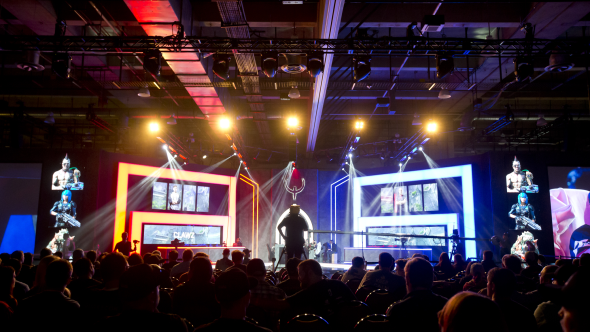
“I have a teeny, tiny bit of a sadist streak in me for trolling and fucking with people,” Hines says.
There was no stream running during the Doom reveal. No phones or cameras allowed. In defiance of the current industry standard, the presentation doesn’t exist anywhere on the internet. The only records of what happened on July 17th, at the Hilton Anatole in Dallas, are the accounts of those who were in the room.
Stratton had been designated to show Doom on-stage. At Hine’s behest, he began his presentation with a Powerpoint. As slides of concept art slid by, attending press later divulged to Hines, the audience of 3,000 Quake fans grew uneasy. Were the rumours true? Was this really all id had to show for the years lost to Doom 4?
Then Stratton said: “Obviously, the proof is in the pudding and you guys would all like to see the game.”
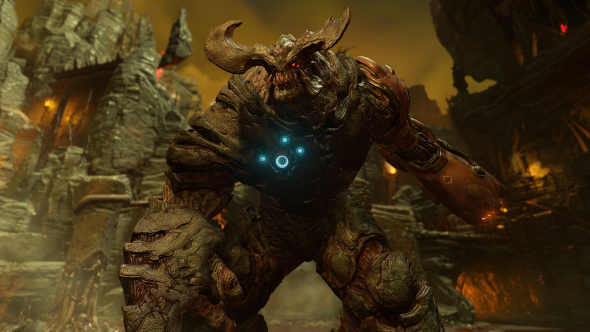
“We played Doom for 20 or 30 minutes, and the crowd went fucking bonkers,” Hines says, smiling at the memory. “They were just ravenous. You got to hear a room full of people react to the first really gruesome glory kill.”
When Doomguy pulled out the chainsaw and started sawing through imps, the audience collectively lost its mind. And the entire Doom team was in the room to see it.
“I always say QuakeCon is the greatest home field advantage in videogames,” Stratton says. “It was so nerve-wracking, because we had found our voice internally but we just didn’t externalise it. That was the moment of standing up and being like, ‘This is who we are, this is what we’re making, we hope you like it’.”
Doom fans liked it, and then some. The demo ended with a standing ovation. The dev team were surrounded by cheering people – exactly the confidence boost they’d been needing since Carmack left the building.
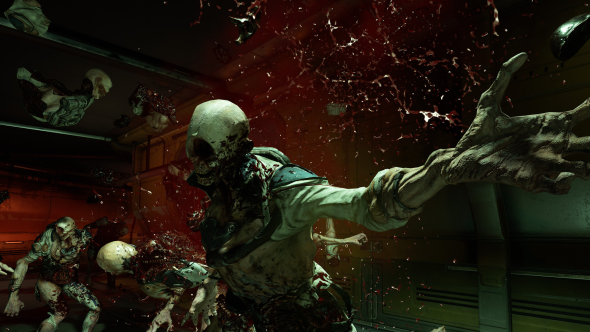
“If you had been working on a game forever,” Hines asks, “and you’d gone through these changes and these bumps, wouldn’t you want to be there to see how people reacted? It was like a religious experience for those folks – just to be there and to feel that outpouring of energy. That’s something I’ll never forget.”
In that moment, he finally knew for sure that rebooting Doom was going to work. “What we have, on just a very primal, core level, resonates with people,” he thought. “It knows what it is.”
Afterwards, as he left the hall, Hines passed an attendee from a fansite conducting a camera interview with a friend. The man was almost in tears describing the scenes he’d just seen up on-stage.
“We got there,” Hines says, triumphantly. “That thing we’d been talking about and we thought was really cool had the exact intended effect.
“Plus,” he adds, “the satisfaction of trolling everyone.”
The new id
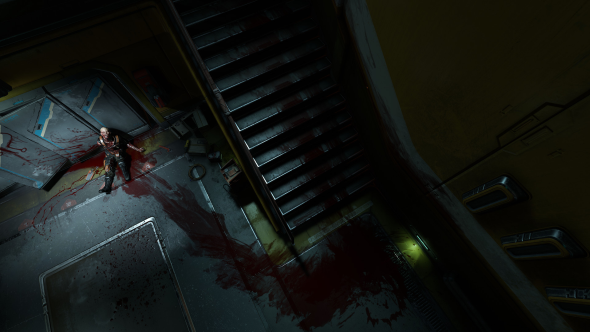
In the history books, they’ll refer to the id BQC 2014 – that is, Before QuakeCon 2014 – and the id after. The reveal was a pivot point, and a sudden shift in vibe was tangible at the studio from that day onwards.
“Screw those guys that said id was dead or we couldn’t move on,” went the new attitude. “Now we’ve got to keep it going. We’ve got to recognise what got us here, and try to improve and do even better.”
Like a quad damage power-up, the backing of the public brought a new energy into the studio. It powered id through the remainder of Doom’s development – and Doom’s subsequent success injected life and confidence into Quake Champions too.
We are in an upswing, my friend,” Willits smiles. “The success of Doom has made Quake Champions way easier to make, make no mistake. And we’ve been rolling with Champions, a big Doom update with the multiplayer, Doom VFR. It’s a lovefest at the company right now. I’ve been there for 22 years, and this is a lovefest.”
Rock stars
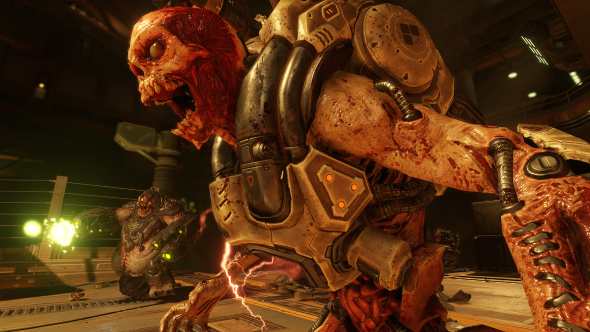
When asked about the perception that id was all about its rock star developers, Willits suggests it’s more complex than that.
“The fact that we have become much more successful without them goes to explain a lot,” he says. “And you can quote me on that.
“I say ‘them’ – I’m not throwing anyone under the bus when I say that,” he adds. “But the proof is in the products. Everyone has a different story, everyone can say their viewpoint, and you can look at it from the inside or the outside. But what it really comes down to is the games which we make. And we win. It’s been a good couple of years, you have to admit.”
Willits recounts an anecdote told to him by John Hill, id’s esports manager and a former pro, about esports athletes and their groupies. “You know how many groupies we have as game developers? None,” Willits told Hill.
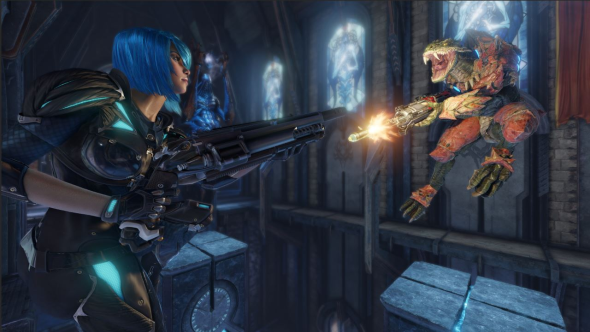
The point is that id are no longer the rock stars – their players are. The pros who competed at QuakeCon this year for a $1,000,000 prize pool are the characters they care about nurturing.
“Sometimes I think personalities have gotten in the way of what we were truly doing,” Willits says. “You’ve got Rapha and Cooller – those are the personalities people care about, more than us. That’s why we want to build an infrastructure and community to foster those human stories. Because no-one cares what Tim Willits thinks, they want to see Cooller vs Rapha.”
It sounds as if, having had a front seat to the invention of the rock star game developer, id’s creative director is kind of over that at this point.
Yes,” Willits laughs. “I want to see Team Liquid win it. I want to watch that guy from the BYOC win it all. That’s what people care about, and that’s what makes Quake Champions shine. It’s not us.”
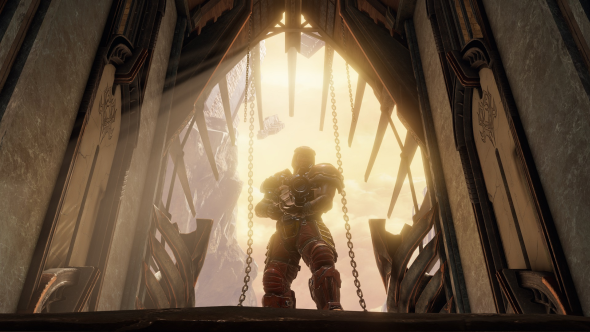
The id that Stratton joined 17 years ago housed some of the biggest personalities in games. But since its last rock star left, the studio have come around to a different perspective.
“Even the greatest all-stars within id, they couldn’t accomplish what we accomplished in Doom without the team,” he says. “You can’t just go out by yourself and do that. The sum of the parts is always greater, and making sure everyone remembers that [is important]. We will always do better work together than anybody can do individually.”
The biggest thing for id now is making sure that the studio remains less ego and more confidence.
“Confidence in each other, confidence in our abilities, confidence in the talent that we’ve hired, and confidence in our ability to deliver a game that people like,” Stratton says. “And that’s it.”
